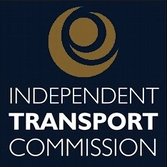Call for Evidence: The Spatial effects of High Speed Rail
2012 CALL FOR EVIDENCE
What will be the spatial effects of High Speed Rail in the UK?
Recent debates have indicated that there is still considerable uncertainty over the effects of High Speed Rail on the UK’s cities and regions. How will High Speed Rail affect those cities and regions it serves and those it bypasses? Will High Speed Rail increase London’s economic dominance or spread it more evenly? And what does new high-speed connectivity mean for the shape of the UK in the years to come? It will be important to understand these economic and social effects clearly if we are to ensure that any new High Speed Rail investment maximises benefit for those areas it serves.
During Autumn 2012 the ITC launched a national consultation seeking views from business, the rail industry, local government, interest groups and members of the public.
Call for Evidence Questions:
This call for evidence sought input in the form of ideas, evidence and suggestions from all organisations and individuals with an interest in the spatial effects of High Speed Rail.
The key questions on which comment was invited are listed below. We also, recognising that these were not exhaustive, welcomed submissions on closely related issues that it was thought we should consider:
- Will the cities served by HSR become subservient centres to London or be enriched in their own right?
- How will HSR impact on the economic and social life of the cities it serves?
- What will be the impact of HSR on those cities/regions it will not directly serve?
- What should be the top priorities for investment in HSR in order to ensure it improves your locality/city/region?
- What additional public/private investment should be considered by these cities and their wider region to capture the maximum value?
Full details are included in the Call for Evidence document downloadable here
Submissions:
We received an excellent range of submissions from a wide range of stakeholders. The ITC would like to express its gratitude to all those who took the time to respond.
Please click here for an INDEX containing a full list of response received by the end of 2012.
- AECOM (Chris Choa): Direct Response.
- Birmingham Airport: Direct response plus links to following reports. Appendix A: WMEF report http://westmidlandseconomicforum.co.uk/images/uploads/WMEFBirminghamAirportStimulatingRevivalSeptember20122.pdf
Appendix B: Birmingham Airport report
http://balancedaviationdebate.com/aviationreport.pdf
Appendix C: Advantage West Midlands report http://www.solihull.gov.uk/Attachments/RealisingthepotentialoftheM42_Corridor.pdf - Birmingham City Council: Direct Response.
- Buckinghamshire County Council: Sent link to University of Manchester report for RTPI: http://www.sed.manchester.ac.uk/research/cups/mapforenglandfinalreport.pdf
- Campaign for Better Transport: Sent co-sponsored report The Carbon impacts of HS2 http://www.greengauge21.net/publications/the-carbon-impacts-of-hs2/
- Centro (West Midlands): Direct Response
- CPRE: Direct Response
- David Lock Associates: Direct Response
- Dr John Disney (Nottingham Business School): Direct Response.
- Dr Dan Graham (Imperial College, London): Sent paper ftp://ftp.hsrc.unc.edu/pub/TRB2011/data/papers/11-0914.pdf
- Greengauge21: Direct Response
- Professor Sir Peter Hall/Chia Lin Chen (UCL): Direct Response, plus following articles: i) Chen/Hall, Journal of Transport Geography 19 (2011) 689-704 , ii) Chen/Hall, Journal of Transport Geography 24 (2012) 89-110 .
- Hitachi Europe: Direct Response
- Joe Holyoak (Studio 321): Sent note on Eastside Masterplan Severance.
- KPMG: http://www.greengauge21.net/wp-content/uploads/consequences-for-employment.pdf
- Leeds Sustainable Development Group: Direct Response.
- London & Continental Railways: Sent LCR/Volterra report on the Economic Impacts of HSR. Download from http://www.volterra.co.uk/wp-content/uploads/2012/02/Economic-Impact-of-High-Speed-1.pdf
- METRO (Leeds): Sent co-supported Arup report on Eastern Branch of HSR line: http://www.syltp.org.uk/documents/Final%20Report%20ENP.pdf
- Professor David Metz (UCL): Direct Response
- George Muir: Direct Response plus Passenger Transport article: http://www.passengertransport.co.uk/2011/07/hs2-or-not-to-hs2-that-is-the-question/
- Network Rail: Direct Response
- Northamptonshire County Council: Direct Response
- Professor Henry Overman/ Max Nathan (LSE): Direct Response
- Peter Brett Associates: Direct Response
- Robert Ravelli: Direct Response
- Kerri Farnsworth (RIBA): Direct Response
- Royal Town Planning Institute (RTPI) – Richard Blyth: Direct Response
- Sheffield City Council: Response not published at author’s request.
- South Yorkshire PTA: Direct Response
- Transport for London: Direct Response
- Transport Studies Unit, University of Oxford: Direct Response plus following articles: i) Givoni/Sanchez-Mateos ‘The Accessibility impact of a new High-Speed Rail line in the UK’ , ii) Banister/Givoni, Journal of Transport Geography 22 (2012) 306-307.
- Travelwatch NorthWest (John Moorhouse): Direct Response plus Position Paper (Peter Robinson)
- Camilla Ween: Direct Submission
- Alan Wenban-Smith: Direct Response plus 2009 report for Greengauge21. http://www.greengauge21.net/wp-content/uploads/Complementary-Measures-for-Regional-Economic-Benefits.pdf
- Geoff Woodling: Submission on ‘The Peakring Argument’.
- Yorkshire for HS3 (Samuel Fisher): Direct Response

